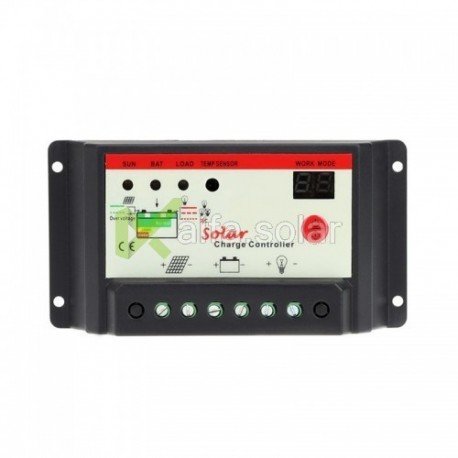Pwm Solar Charge Controller Instrukciya Na Russkom
Data such as voltage, current and state of charge can also be displayed digitally as figures on the display Hybrid controller. State of charge determination with Steca Aton. IC (SOC)Automatic detection of voltage. Multistage charging technology. Load disconnection depending on SOCAutomatic load reconnection. Temperature compensation. PWM Solar Charge Controllers. Traditional Pulse Width Modulated (PWM) Solar Charge Controllers have been around for several years and force your solar panels to operate at the same voltage as your battery bank during charging. They tend to be less expensive than MPPT (Maximum Power Point Tracking) charge controllers.

These controllers are not anything new in the market. As a matter of fact, they have been here since the very existence of Solar Panels.
Whereas in earlier days, the method was more of a simpler approach. The controller started/stopped the power connectivity between panels and batteries as per requirement. But now we’ve moved into a new era, right? So things were bound to change even for these humble Solar Charge Controllers as well. Since we were presented with the mighty PWM and MPPT Solar Charge Controllers, they have dominated the market ever since. Now the question arises: “Which is better of these two?” Let’s check out. PWM stands for Pulse Width Modulator that can be imagined as a switch being turned on or off at certain intervals as per the requirement.
Now PWM Solar Charge Controllers work in the same manner. The regulator connects the solar panel and batteries at varied time intervals. Let’s see how: If the solar panel is fully charged, the PWM Controller will disconnect the batteries to keep it from overcharging. Also, this method makes sure that the solar panel is always charged at the standard voltage level. PWM Solar Charge Controller MPPT Solar Charge Controller Cost The cost of a PWM controller is one-third as compared to MPPT Controller MPPT Controller is relatively an expensive one-time investment Size These controllers are smaller in size going at most till 60 Amps These controllers are designed specifically to be large supporting bigger solar panels in an efficient manner Durability In terms of their durability, PWM Controllers are more durable MPPT controllers are more prone to breakage.
Although, they come with a longer warranty period Market Appearance PWM has been in the market for a long time and is therefore tried and tested MPPT is relatively new but a raging trend in the market Limitation It can’t be used with bigger solar panels (>60 panels) The array voltage has to be at all times higher than the battery voltage. As we can see both PWM and MPPT Solar Charge Controllers come with their own set of pros and cons, it varies upon the user and their requirement, which one they should purchase.
Ideally, if your solar panel is smaller and to be installed in a low to the humid climatic region, you can go for PWM Solar Charge Controllers. Whereas, MPPT Solar Charge Controller would be more effective if the weather is going to be cloudy/rainy and you require flexibility within your system.
OVATION Auroral Forecast This model gives a short-term forecast of the intensity of the auroral oval for both the northern and the southern hemisphere. The map shows the intensity and the location of the auroral oval for the time given in the right-hand corner of the map. It is based on the solar wind and interplanetary magnetic field (IMF) conditions as measured by the DSCOVR spacecraft. Zrazok protokolu virobnicho naradi v dnz.
It is also proven to be 30% more efficient. In conclusion, if you have money to spare, go for solar panel with MPPT Solar Charge Controller and you won’t be disappointed.
Moreover, the aftercare support for this product is very reliable. So what are you waiting for? Be a part of the beautiful greener environment Order your new now!